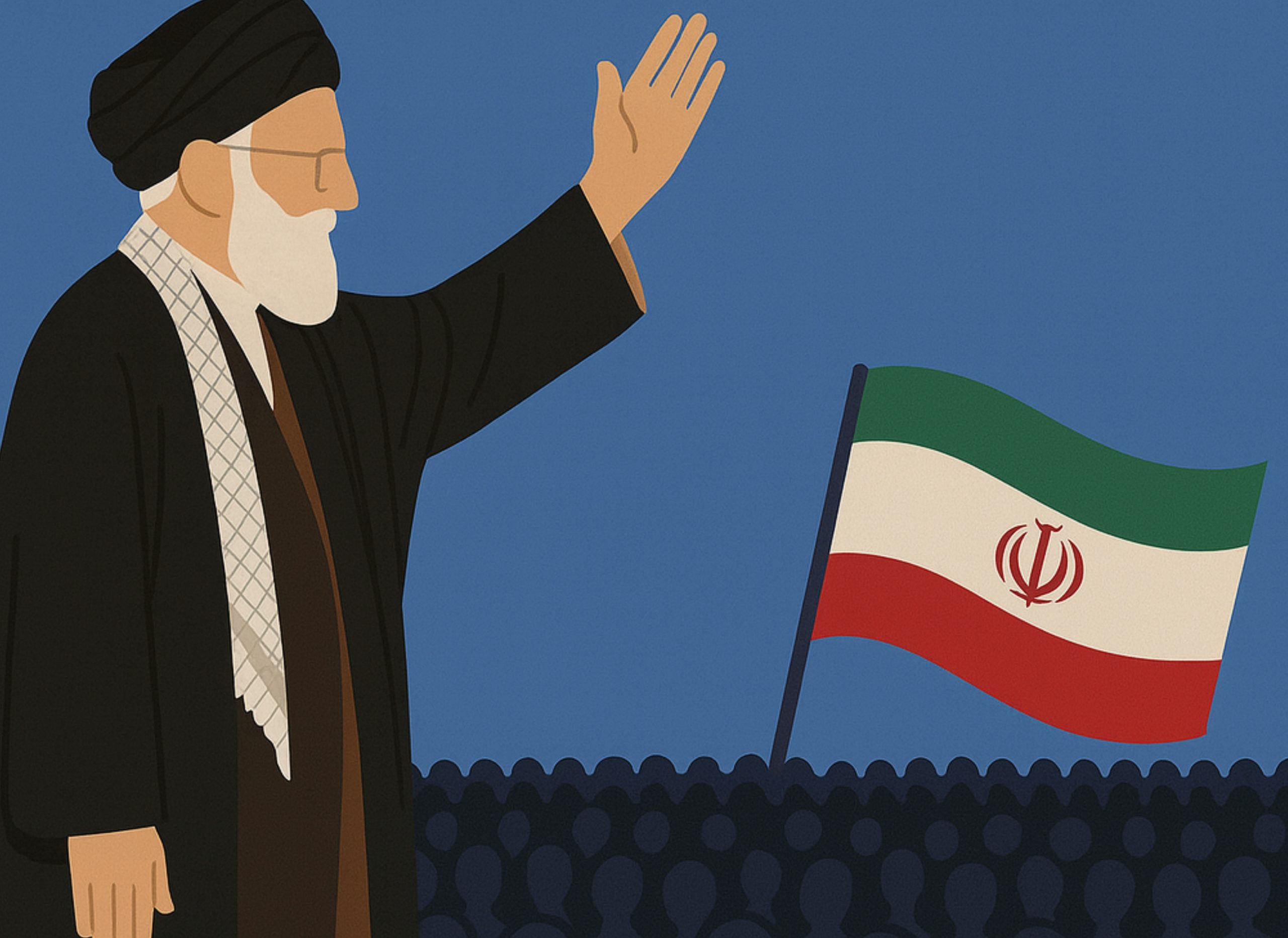

Iran’s ruling regime is going through one of the most difficult moments in its history. More than forty years after the 1979 revolution, the pillars that once held the Islamic Republic together are weakening. Its ability to deter enemies has significantly declined. During the 12-day war with Israel in 2025, known as Operation Midnight Hammer, Iran watched its defenses collapse as American B-2 bombers struck deep inside the country. The attacks targeted major nuclear facilities in Fordow, Isfahan, and Natanz, leaving much of Iran’s nuclear infrastructure in ruins and exposing the regime’s growing vulnerability. The sense of moral and symbolic authority that once defined Tehran’s leadership was also shaken. For decades, the government portrayed itself as the defender of resistance against Israel and the U.S., yet it failed to prevent or meaningfully respond to these attacks, damaging its image at home. With its defenses shattered and its people drained by years of repression and economic hardship, Iran now faces a defining question: what comes next for this regime and for its people?
Alone in the Fire
After Operation Midnight Hammer, power inside Iran began to shift in visible ways. For decades, the Islamic Revolutionary Guard Corps had been regarded by many Iranians as the backbone of national defense and a symbol of strength, its reputation built during the Iran-Iraq War and reinforced by later interventions across the region. Yet in 2025, that image cracked. The Guard’s air defense and intelligence networks failed to stop deep strikes across the country, and what had long been seen as a shield of national pride was revealed as vulnerable. In the aftermath, the IRGC assumed an even greater role as the main force responsible for preserving the state’s survival, while the civilian leadership faded into the background.
Even in weakness, the regime managed to find temporary unity, a short rally-around-the-flag moment that brought people together under pressure but also tightened repression. Beneath that façade of unity, however, lies exhaustion. Inflation, unemployment, and social restrictions have created quiet anger. The government’s attempts to rebuild legitimacy through nationalism cannot hide the growing distance between rulers and ruled. The revolutionary project has lost its moral power and now endures more through fear than conviction.
Iran’s network of proxy militias across the Middle East has begun to fragment. The escalating conflict between Israel and Iran from 2023 to 2025, culminating in Operation Midnight Hammer, exposed just how fragile Tehran’s regional system of influence had become. Israel’s campaign struck directly at the core of that strategy, eliminating senior Hezbollah commanders and driving allied groups into retreat. The sudden fall of Bashar al-Assad in Damascus severed Iran’s main land corridor to the Mediterranean and ended one of its longest-standing alliances. The Houthis in Yemen disrupted shipping and maritime trade in the Red Sea but failed to create any meaningful leverage on Israel or the U.S. to halt the war in Gaza. Meanwhile, Iraq’s Shia militias remained largely passive once Iran itself came under direct attack. What Tehran once called its “axis of resistance” now appears fractured and uncertain, its pillars weakened by both external blows and internal fatigue.
is a Master’s candidate in Global Governance, Politics, and Security at the School of International Service, American University, with a concentration in Security. His research interests include foreign policy analysis, democratization and autocratization, and Middle East politics.

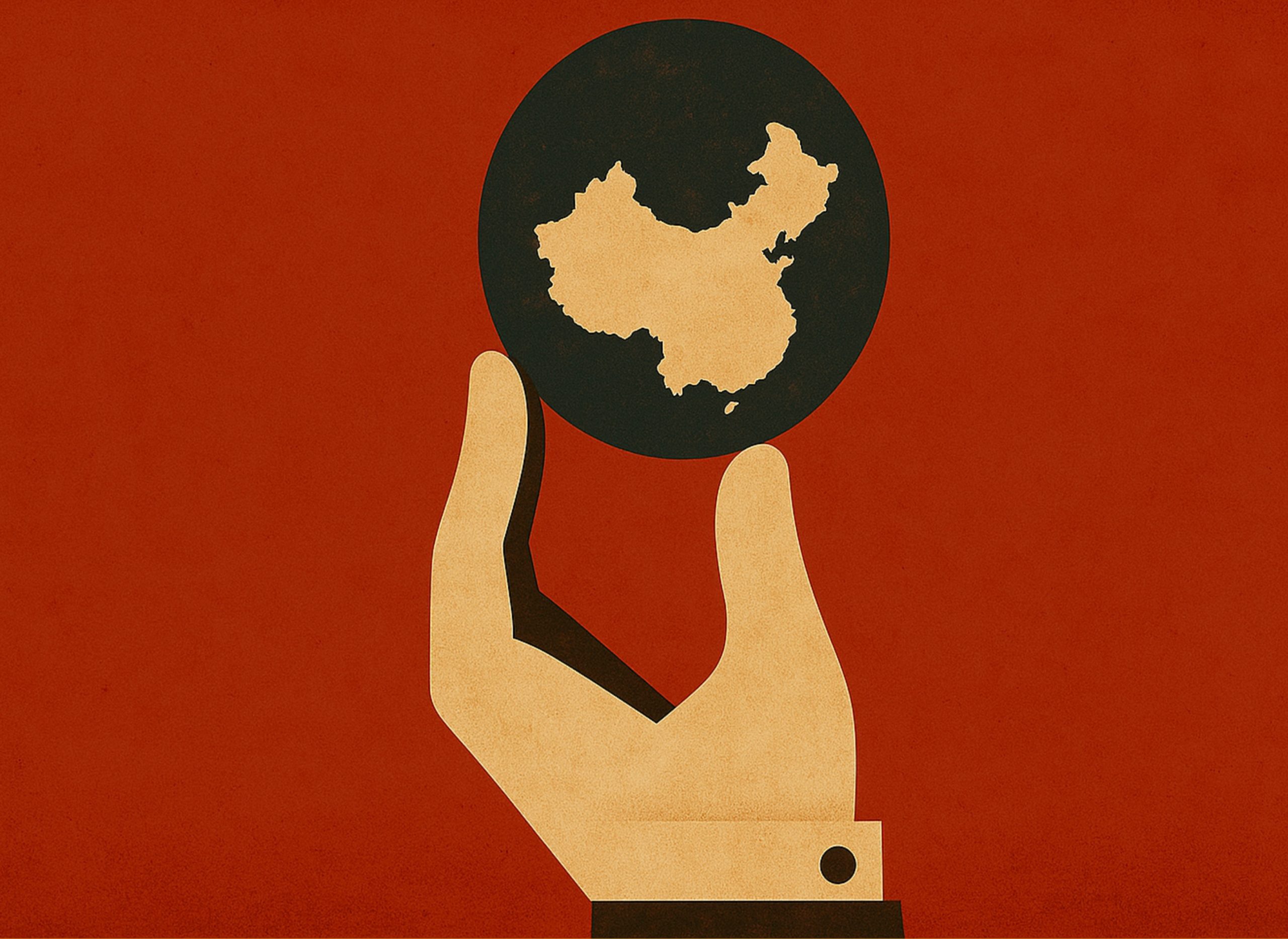
The Chinese Experience That Challenges the Universality of Liberalism
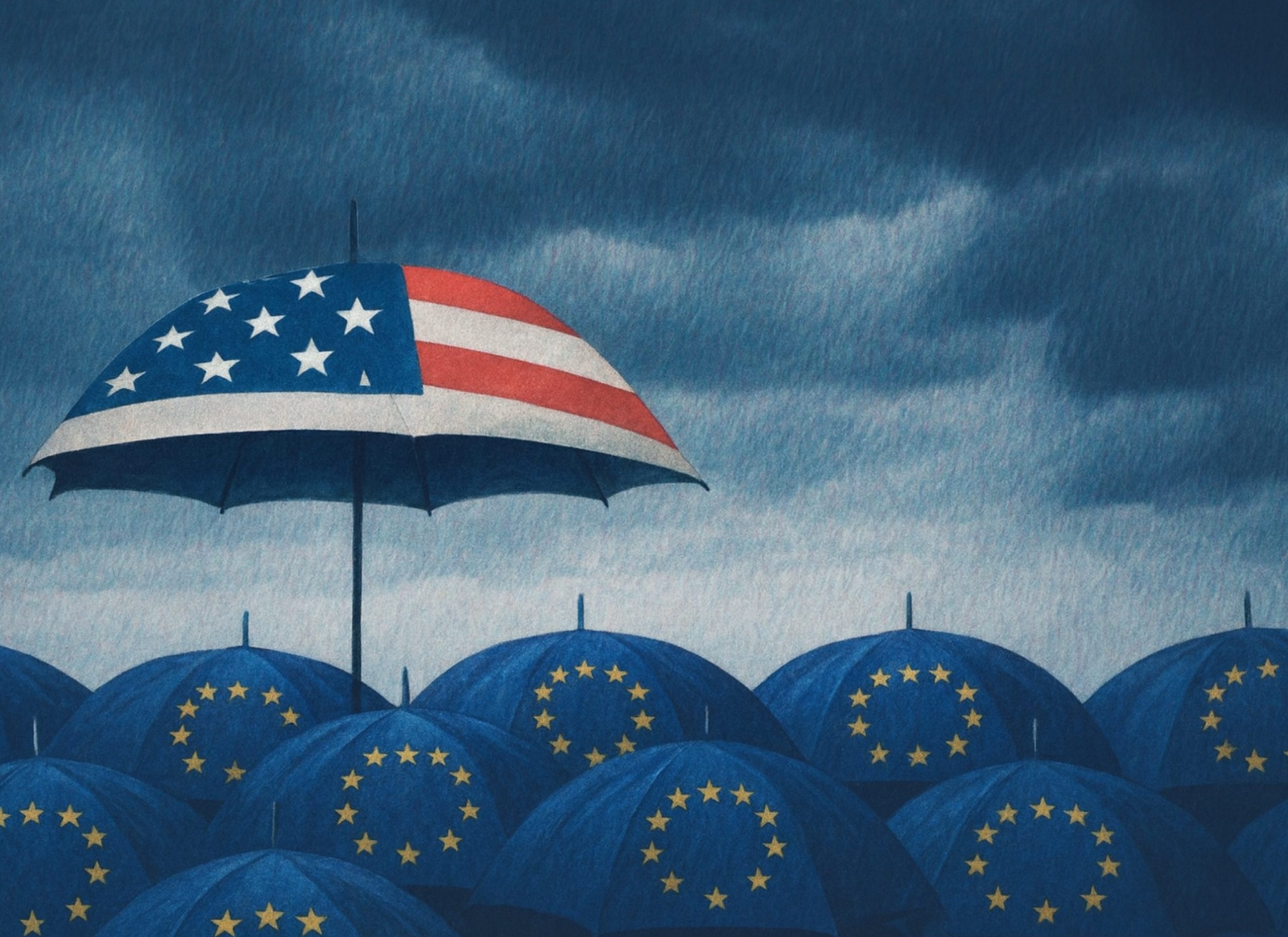
The doctrine of “forward defense,” built on using partners to fight wars far from Iran’s borders, no longer works. Instead of expanding its reach, Tehran now finds itself surrounded by weakness. The war also revealed something deeper: Iran’s influence relied more on perception than actual strength. Gulf states watching from the sidelines realized that Iran’s military posture was not sustainable. At the same time, the U.S. and Israel reasserted their dominance, while China and Russia, Tehran’s supposed allies, offered only muted support, limiting their role to statements and trade. This silence made Iran’s isolation evident. The regime is now being forced to question how long it can rely on anti-Western solidarity when even its closest partners are unwilling to share the cost of confrontation.
Iran’s sense of security began to unravel weeks before Operation Midnight Hammer even started. In June 2025, Israel’s Mossad carried out a covert mission known as Operation Rising Lion. The operation involved agents infiltrating Iran and planting drone-based precision strike systems near major military and air defense facilities. A video released afterward showed Mossad operatives moving freely inside Iran, assembling and deploying the drones. For many Iranians, seeing that footage was more shocking than any airstrike. It proved that their most secret security infrastructure had been breached, and that Israel could act deep inside their borders without detection. The psychological impact of Rising Lion set the stage for what came next.
Two months later, Operation Midnight Hammer struck Iran’s nuclear sites at Fordow, Natanz, and Isfahan. B-2 stealth bombers and Tomahawk missiles hit their targets with precision while Iran’s radar and air defense systems failed to respond in time. The attack did not rely only on surprise and deception; it also showed how advanced missile technology and superior coordination helped overwhelm Iranian defenses. Within hours, much of Iran’s nuclear infrastructure was left in ruins. Tehran insisted that only limited damage occurred, but satellite images and independent assessments suggested otherwise. The full extent of destruction remains uncertain, yet the regime’s silence and conflicting statements revealed how deeply it was shaken. Senior IRGC officers linked to air defense and nuclear security were quietly removed, and internal purges followed.
Rumors of insider cooperation with foreign intelligence spread quickly, feeding the sense that betrayal had reached the upper levels of power. Iran’s retaliation was limited but not entirely symbolic. A handful of missiles, including some hypersonic variants, were launched toward Israel and U.S. bases and hit targets in Tel Aviv and Qatar before most were intercepted. What had once been the foundation of Iran’s deterrence, the belief that it could not be struck without massive retaliation, was gone. The combination of internal sabotage, precise foreign infiltration, and military defeat shattered both the physical and psychological shield that had protected the regime for decades.
The doctrine of “forward defense,” built on using partners to fight wars far from Iran’s borders, no longer works. Instead of expanding its reach, Tehran now finds itself surrounded by weakness. The war also revealed something deeper: Iran’s influence relied more on perception than actual strength. Gulf states watching from the sidelines realized that Iran’s military posture was not sustainable. At the same time, the U.S. and Israel reasserted their dominance, while China and Russia, Tehran’s supposed allies, offered only muted support, limiting their role to statements and trade. This silence made Iran’s isolation evident. The regime is now being forced to question how long it can rely on anti-Western solidarity when even its closest partners are unwilling to share the cost of confrontation.
Iran’s sense of security began to unravel weeks before Operation Midnight Hammer even started. In June 2025, Israel’s Mossad carried out a covert mission known as Operation Rising Lion. The operation involved agents infiltrating Iran and planting drone-based precision strike systems near major military and air defense facilities. A video released afterward showed Mossad operatives moving freely inside Iran, assembling and deploying the drones. For many Iranians, seeing that footage was more shocking than any airstrike. It proved that their most secret security infrastructure had been breached, and that Israel could act deep inside their borders without detection. The psychological impact of Rising Lion set the stage for what came next.
Two months later, Operation Midnight Hammer struck Iran’s nuclear sites at Fordow, Natanz, and Isfahan. B-2 stealth bombers and Tomahawk missiles hit their targets with precision while Iran’s radar and air defense systems failed to respond in time. The attack did not rely only on surprise and deception; it also showed how advanced missile technology and superior coordination helped overwhelm Iranian defenses. Within hours, much of Iran’s nuclear infrastructure was left in ruins. Tehran insisted that only limited damage occurred, but satellite images and independent assessments suggested otherwise. The full extent of destruction remains uncertain, yet the regime’s silence and conflicting statements revealed how deeply it was shaken. Senior IRGC officers linked to air defense and nuclear security were quietly removed, and internal purges followed.
Rumors of insider cooperation with foreign intelligence spread quickly, feeding the sense that betrayal had reached the upper levels of power. Iran’s retaliation was limited but not entirely symbolic. A handful of missiles, including some hypersonic variants, were launched toward Israel and U.S. bases and hit targets in Tel Aviv and Qatar before most were intercepted. What had once been the foundation of Iran’s deterrence, the belief that it could not be struck without massive retaliation, was gone. The combination of internal sabotage, precise foreign infiltration, and military defeat shattered both the physical and psychological shield that had protected the regime for decades.

After the strikes, Iran’s nuclear program shifted from negotiation to survival. The destruction of Fordow and Natanz erased years of progress and convinced Tehran that restraint no longer guaranteed safety. Rebuilding was no longer about leverage but about defending the regime. Inside the leadership, the belief grew that only a real deterrent could prevent another attack. What had been controlled brinkmanship turned into a desperate reflex, where every move to restore capability risks provoking another confrontation but doing nothing feels even more dangerous.
The Empty Republic
The Islamic Republic’s revolutionary story no longer moves its own people. It feels tired, hollow, and disconnected from the lives of those who grew up long after 1979. The majority of Iranians today are under thirty. They were born into sanctions, isolation, and promises that never came true. The language of resistance and sacrifice that once defined the regime sounds empty to a generation that wants opportunity and dignity, not ideology. The “Woman, Life, Freedom” movement emerged as the clearest symbol of that loss of faith across a generation. When Mahsa Amini’s death sparked protests across Iran in 2022 and 2023, it was not just about veils (hijabs) or laws. It was about young people demanding a voice in a country that had long silenced them. Tehran crushed those protests brutally, executing and imprisoning its own youth to preserve control. That violence marked a turning point. It showed an entire generation that the state would rather destroy its children than change for them.
Even among officials, there is quiet recognition that the revolution has lost its moral power. Some reformists still speak of moderation and renewal, but they are isolated. Religion has faded into a system of surveillance and fear. The mosque has been replaced by the camera, and the regime now preserves control through constant monitoring. This shift from offering people hope to watching them closely has made the state’s decline all the clearer. The promise of spiritual guidance has turned into a culture of obedience. What remains is exhaustion. The people are angry but also wary. They have seen what happens when hope collides with repression. Iran’s rulers still cling to the idea of resistance, but for most Iranians, the revolution’s fire has become an illusion. The country continues to move, but it no longer believes in the direction it is going.
The very institutions meant to protect the regime are now showing signs of fatigue. The Islamic Revolutionary Guard Corps and its Basij militia have been battered by both external attacks and internal decay. The IRGC’s Quds Force and aerospace units have lost key commanders and much of their confidence after a string of targeted Israeli strikes. Dozens of senior officers were killed during the conflict, and some of their replacements were eliminated soon after, chipping away at the Guard’s long-cultivated image of invincibility. Reports of infiltration and corruption have also weakened the force from within, and loyalty, though professed, is now shadowed by mistrust.
Iran stands at a crossroads, and it is difficult to predict with certainty where it will go next.
To contain that risk, the Supreme Leader has quietly shifted some authority to a strengthened IRGC council to secure loyalty as succession questions grow. On the streets, the Basij and police still serve as the first line of defense against unrest, but they are overstretched. Since the war, checkpoints and raids have become routine, and parts of the country operate under near-constant surveillance. Tehran appears to be tightening its security grip, relying more heavily on coercive power to fill the gaps left by the IRGC’s losses. Yet this tightening also reveals weakness, as the more the regime depends on force, the more it exposes the vulnerability within the very system meant to keep it alive.
Decades of authoritarian rule, isolation, and economic hardship have left most Iranians deeply disillusioned. Ordinary people are torn between rejecting a regime that has failed to improve their lives and fearing that chaos or foreign intervention could make things worse. Iran’s modern history has created what many analysts call a fear of collapse. The memory of the 1979 revolution’s turmoil, the eight-year war with Iraq, and the devastation seen in places like Syria and Libya have all shaped how people think about change. Even those who despise the religious leadership hesitate to risk civil war on their own soil.
This is why calls for regime change from abroad rarely find support inside Iran. When the U.S. and Israel bombed Iranian targets in 2025, the strikes did not unite the public against the regime but instead deepened the sense of national anxiety. Many Iranians, including dissidents, condemned the attacks for endangering the country itself. Repression at home remains brutal, and protests are met with bullets and imprisonment, yet fear of collapse has made people cautious. Most now prefer an unsatisfying stability over the unknown. This uneasy balance defines the country’s present mood, a society that remains angry and wary yet uncertain about how far it can go.
Between Fear and Change
Iran stands at a crossroads, and it is difficult to predict with certainty where it will go next. Three futures seem possible, each carrying its own kind of danger. None of them promise stability, and all could reshape the region in profound ways. The first path is one of survival through control. The regime could cling to power by tightening its grip and relying on fear to maintain order. In this scenario, hardliners strengthen the security services, silence dissent, and depend on propaganda to preserve obedience. Tehran might lean even more heavily on Moscow and Beijing, trading autonomy for economic and political support. It is a path that keeps the state alive but hollow, a government surviving through control rather than legitimacy.
The system might endure, but its purpose would be lost. The second path is a managed transformation from within. This remains the most hopeful possibility, even if it feels remote. Some within the establishment already understand that the country cannot move forward without change. Mounting economic strain, social fatigue, and the shock of recent defeats could force a rethinking of priorities. The leadership might ease restrictions, pursue limited reforms, and rebuild relations abroad to relieve pressure at home. Such a shift would not bring democracy, but it could begin to restore a measure of trust. It would take courage from within a system built on fear, yet even small openings can have long consequences.
The last and most highly concerning is collapse. If unrest reignites, the security forces fracture, and regional powers intervene, Iran could unravel quickly. The IRGC might split, provincial governors could assert autonomy, and ethnic minorities could rise in revolt. Outside actors like Saudi Arabia, Türkiye, Russia, and Israel would all try to shape the chaos, while the U.S. and the United Kingdom would be forced to respond, whether by containing the fallout or striking at new threats. Beijing and Moscow would protect their own interests, likely competing for influence in the vacuum. A collapse like that would ripple across the region through refugee flows, sectarian conflict, terrorism, and the spread of weapons. It is the least likely scenario, but also the most dangerous.
For now, Iran remains suspended between these futures. The regime is weaker but not yet broken. The people are disillusioned but still fear that what comes after could be worse than what they live with now. The Islamic Republic’s fate will depend less on external pressure or ideology, and more on whether its internal contradictions continue to erode the system from within.
What Comes After the Revolution
Whatever direction Iran takes will reshape regional security and great-power politics. The consequences reach far beyond Tehran’s borders and will influence how Israel, the U.S., and other global powers adjust their strategies in the years ahead. For Israel, the stakes are high. It has always viewed the Iranian regime as a major adversary, given Tehran’s sponsorship of Hezbollah and Hamas. Israeli leaders openly celebrated the regime’s recent turmoil, seeing it as proof of their campaign to weaken Iran’s power base. The war showed both Israel’s capability and its limits. It destroyed much of Iran’s military infrastructure and nuclear capacity but did not bring down the regime. If Iran remains authoritarian yet weakened, Israel will likely consolidate its regional dominance and continue a policy of containment and preemption. However, a collapse inside Iran could unleash refugee flows, destabilize neighboring states, and risk the spread of nuclear materials. For Israel, that would mean balancing opportunity with danger, pressing its advantage while preparing for chaos.

After the strikes, Iran’s nuclear program shifted from negotiation to survival. The destruction of Fordow and Natanz erased years of progress and convinced Tehran that restraint no longer guaranteed safety. Rebuilding was no longer about leverage but about defending the regime. Inside the leadership, the belief grew that only a real deterrent could prevent another attack. What had been controlled brinkmanship turned into a desperate reflex, where every move to restore capability risks provoking another confrontation but doing nothing feels even more dangerous.
The Empty Republic
The Islamic Republic’s revolutionary story no longer moves its own people. It feels tired, hollow, and disconnected from the lives of those who grew up long after 1979. The majority of Iranians today are under thirty. They were born into sanctions, isolation, and promises that never came true. The language of resistance and sacrifice that once defined the regime sounds empty to a generation that wants opportunity and dignity, not ideology. The “Woman, Life, Freedom” movement emerged as the clearest symbol of that loss of faith across a generation. When Mahsa Amini’s death sparked protests across Iran in 2022 and 2023, it was not just about veils (hijabs) or laws. It was about young people demanding a voice in a country that had long silenced them. Tehran crushed those protests brutally, executing and imprisoning its own youth to preserve control. That violence marked a turning point. It showed an entire generation that the state would rather destroy its children than change for them.
Even among officials, there is quiet recognition that the revolution has lost its moral power. Some reformists still speak of moderation and renewal, but they are isolated. Religion has faded into a system of surveillance and fear. The mosque has been replaced by the camera, and the regime now preserves control through constant monitoring. This shift from offering people hope to watching them closely has made the state’s decline all the clearer. The promise of spiritual guidance has turned into a culture of obedience. What remains is exhaustion. The people are angry but also wary. They have seen what happens when hope collides with repression. Iran’s rulers still cling to the idea of resistance, but for most Iranians, the revolution’s fire has become an illusion. The country continues to move, but it no longer believes in the direction it is going.
The very institutions meant to protect the regime are now showing signs of fatigue. The Islamic Revolutionary Guard Corps and its Basij militia have been battered by both external attacks and internal decay. The IRGC’s Quds Force and aerospace units have lost key commanders and much of their confidence after a string of targeted Israeli strikes. Dozens of senior officers were killed during the conflict, and some of their replacements were eliminated soon after, chipping away at the Guard’s long-cultivated image of invincibility. Reports of infiltration and corruption have also weakened the force from within, and loyalty, though professed, is now shadowed by mistrust.
It can either begin to change from within or continue tightening its grip until it breaks under its own weight.
From Washington’s perspective, Iran presents a dilemma that has persisted for decades. Containment has kept Tehran isolated but has failed to bring about change, while direct efforts at regime removal risk another Middle East disaster. After the recent conflict, that debate deepened in Washington. Some argued for direct intervention to hasten the regime’s fall, while others warned that another Iraq-style involvement could unravel years of restraint. The administration faces a familiar challenge: supporting Iranian aspirations for reform without causing a collapse that could spiral out of control. The most likely outcome is a policy of containment combined with cautious engagement, maintaining pressure through sanctions and diplomacy while avoiding escalation. Yet Washington will remain divided between those who see Iran as a threat to be crushed and those who see it as a problem to be managed.
Beyond Washington and Tel Aviv, Iran’s trajectory will shape the entire Middle East balance of power. With Assad’s fall in 2024 weakening one of Tehran’s key alliances, the regional balance of power has shifted, strengthening Sunni powers like Türkiye and Saudi Arabia. If Iran fractures further, those same states will compete to fill the vacuum. Ankara may move to secure Kurdish regions, Riyadh could back Arab separatists in Khuzestan, and Baku might press claims in the Azeri north. Moscow and Beijing would act quickly to protect their economic interests and influence, potentially competing for footholds in a post-Iran order. Ideologically, the outcome will matter too. A surviving theocracy may turn inward, abandoning its revolutionary ambitions, while a reformed or fallen regime would send shockwaves across Islamist movements from Lebanon to Yemen.
In the end, Iran’s domestic path will determine far more than its own survival. Whether it remains an embattled autocracy, evolves into a cautious reformist state, or collapses entirely, each outcome carries consequences that stretch from Tel Aviv to Washington, Moscow, and Beijing. What happens in Tehran will define not only the future of the Middle East but also the global balance that surrounds it. Reform, retrenchment, or rupture? Iran’s regime now stands at a fork in the road that will decide whether the Islamic Republic adapts or collapses. The recent war and the growing discontent at home have forced Tehran into a moment of reckoning.
It can either begin to change from within or continue tightening its grip until it breaks under its own weight. The regime’s resilience has been remarkable. It has survived war with Iraq, waves of sanctions, assassinations, and countless protests. That history makes it unwise to write its obituary too soon. Yet this time feels different. The convergence of crises, from economic collapse to social exhaustion and military humiliation, has shaken the foundations of its power in ways that can no longer be ignored.
If the leadership cannot recalibrate by tempering ideology and focusing on governance, it may face an end of its own making. The durability of Iran’s revolutionary model is not guaranteed. It depends on whether its rulers can still envision a future that ordinary Iranians want to be part of. The coming years will reveal not only what kind of state Iran becomes, but what role its people will play in shaping that future. The country is not beyond redemption, but time is running out. The world should prepare for all possibilities, because what happens in Tehran will not stay there. The fate of the Islamic Republic will echo far beyond its borders, testing whether a system built on fear can still survive in a generation that has stopped being afraid.
To contain that risk, the Supreme Leader has quietly shifted some authority to a strengthened IRGC council to secure loyalty as succession questions grow. On the streets, the Basij and police still serve as the first
line of defense against unrest, but they are overstretched. Since the war, checkpoints and raids have become routine, and parts of the country operate under near-constant surveillance. Tehran appears to be tightening its security grip, relying more heavily on coercive power to fill the gaps left by the IRGC’s losses. Yet this tightening also reveals weakness, as the more the regime depends on force, the more it exposes the vulnerability within the very system meant to keep it alive.
Decades of authoritarian rule, isolation, and economic hardship have left most Iranians deeply disillusioned. Ordinary people are torn between rejecting a regime that has failed to improve their lives and fearing that chaos or foreign intervention could make things worse. Iran’s modern history has created what many analysts call a fear of collapse. The memory of the 1979 revolution’s turmoil, the eight-year war with Iraq, and the devastation seen in places like Syria and Libya have all shaped how people think about change. Even those who despise the religious leadership hesitate to risk civil war on their own soil.
This is why calls for regime change from abroad rarely find support inside Iran. When the U.S. and Israel bombed Iranian targets in 2025, the strikes did not unite the public against the regime but instead deepened the sense of national anxiety. Many Iranians, including dissidents, condemned the attacks for endangering the country itself. Repression at home remains brutal, and protests are met with bullets and imprisonment, yet fear of collapse has made people cautious. Most now prefer an unsatisfying stability over the unknown. This uneasy balance defines the country’s present mood, a society that remains angry and wary yet uncertain about how far it can go.
Between Fear and Change
Iran stands at a crossroads, and it is difficult to predict with certainty where it will go next. Three futures seem possible, each carrying its own kind of danger. None of them promise stability, and all could reshape the region in profound ways. The first path is one of survival through control. The regime could cling to power by tightening its grip and relying on fear to maintain order. In this scenario, hardliners strengthen the security services, silence dissent, and depend on propaganda to preserve obedience. Tehran might lean even more heavily on Moscow and Beijing, trading autonomy for economic and political support. It is a path that keeps the state alive but hollow, a government surviving through control rather than legitimacy.
The system might endure, but its purpose would be lost. The second path is a managed transformation from within. This remains the most hopeful possibility, even if it feels remote. Some within the establishment already understand that the country cannot move forward without change. Mounting economic strain, social fatigue, and the shock of recent defeats could force a rethinking of priorities. The leadership might ease restrictions, pursue limited reforms, and rebuild relations abroad to relieve pressure at home. Such a shift would not bring democracy, but it could begin to restore a measure of trust. It would take courage from within a system built on fear, yet even small openings can have long consequences.
The last and most highly concerning is collapse. If unrest reignites, the security forces fracture, and regional powers intervene, Iran could unravel quickly. The IRGC might split, provincial governors could assert autonomy, and ethnic minorities could rise in revolt. Outside actors like Saudi Arabia, Türkiye, Russia, and Israel would all try to shape the chaos, while the U.S. and the United Kingdom would be forced to respond, whether by containing the fallout or striking at new threats. Beijing and Moscow would protect their own interests, likely competing for influence in the vacuum. A collapse like that would ripple across the region through refugee flows, sectarian conflict, terrorism, and the spread of weapons. It is the least likely scenario, but also the most dangerous.
For now, Iran remains suspended between these futures. The regime is weaker but not yet broken. The people are disillusioned but still fear that what comes after could be worse than what they live with now. The Islamic Republic’s fate will depend less on external pressure or ideology, and more on whether its internal contradictions continue to erode the system from within.
What Comes After the Revolution
Whatever direction Iran takes will reshape regional security and great-power politics. The consequences reach far beyond Tehran’s borders and will influence how Israel, the U.S., and other global powers adjust their strategies in the years ahead. For Israel, the stakes are high. It has always viewed the Iranian regime as a major adversary, given Tehran’s sponsorship of Hezbollah and Hamas. Israeli leaders openly celebrated the regime’s recent turmoil, seeing it as proof of their campaign to weaken Iran’s power base. The war showed both Israel’s capability and its limits. It destroyed much of Iran’s military infrastructure and nuclear capacity but did not bring down the regime. If Iran remains authoritarian yet weakened, Israel will likely consolidate its regional dominance and continue a policy of containment and preemption. However, a collapse inside Iran could unleash refugee flows, destabilize neighboring states, and risk the spread of nuclear materials. For Israel, that would mean balancing opportunity with danger, pressing its advantage while preparing for chaos.
From Washington’s perspective, Iran presents a dilemma that has persisted for decades. Containment has kept Tehran isolated but has failed to bring about change, while direct efforts at regime removal risk another Middle
East disaster. After the recent conflict, that debate deepened in Washington. Some argued for direct intervention to hasten the regime’s fall, while others warned that another Iraq-style involvement could unravel years of restraint. The administration faces a familiar challenge: supporting Iranian aspirations for reform without causing a collapse that could spiral out of control. The most likely outcome is a policy of containment combined with cautious engagement, maintaining pressure through sanctions and diplomacy while avoiding escalation. Yet Washington will remain divided between those who see Iran as a threat to be crushed and those who see it as a problem to be managed.
Beyond Washington and Tel Aviv, Iran’s trajectory will shape the entire Middle East balance of power. With Assad’s fall in 2024 weakening one of Tehran’s key alliances, the regional balance of power has shifted, strengthening Sunni powers like Türkiye and Saudi Arabia. If Iran fractures further, those same states will compete to fill the vacuum. Ankara may move to secure Kurdish regions, Riyadh could back Arab separatists in Khuzestan, and Baku might press claims in the Azeri north. Moscow and Beijing would act quickly to protect their economic interests and influence, potentially competing for footholds in a post-Iran order. Ideologically, the outcome will matter too. A surviving theocracy may turn inward, abandoning its revolutionary ambitions, while a reformed or fallen regime would send shockwaves across Islamist movements from Lebanon to Yemen.
In the end, Iran’s domestic path will determine far more than its own survival. Whether it remains an embattled autocracy, evolves into a cautious reformist state, or collapses entirely, each outcome carries consequences that stretch from Tel Aviv to Washington, Moscow, and Beijing. What happens in Tehran will define not only the future of the Middle East but also the global balance that surrounds it. Reform, retrenchment, or rupture? Iran’s regime now stands at a fork in the road that will decide whether the Islamic Republic adapts or collapses. The recent war and the growing discontent at home have forced Tehran into a moment of reckoning.
It can either begin to change from within or continue tightening its grip until it breaks under its own weight. The regime’s resilience has been remarkable. It has survived war with Iraq, waves of sanctions, assassinations, and countless protests. That history makes it unwise to write its obituary too soon. Yet this time feels different. The convergence of crises, from economic collapse to social exhaustion and military humiliation, has shaken the foundations of its power in ways that can no longer be ignored.
If the leadership cannot recalibrate by tempering ideology and focusing on governance, it may face an end of its own making. The durability of Iran’s revolutionary model is not guaranteed. It depends on whether its rulers can still envision a future that ordinary Iranians want to be part of. The coming years will reveal not only what kind of state Iran becomes, but what role its people will play in shaping that future. The country is not beyond redemption, but time is running out. The world should prepare for all possibilities, because what happens in Tehran will not stay there. The fate of the Islamic Republic will echo far beyond its borders, testing whether a system built on fear can still survive in a generation that has stopped being afraid.
Recommended
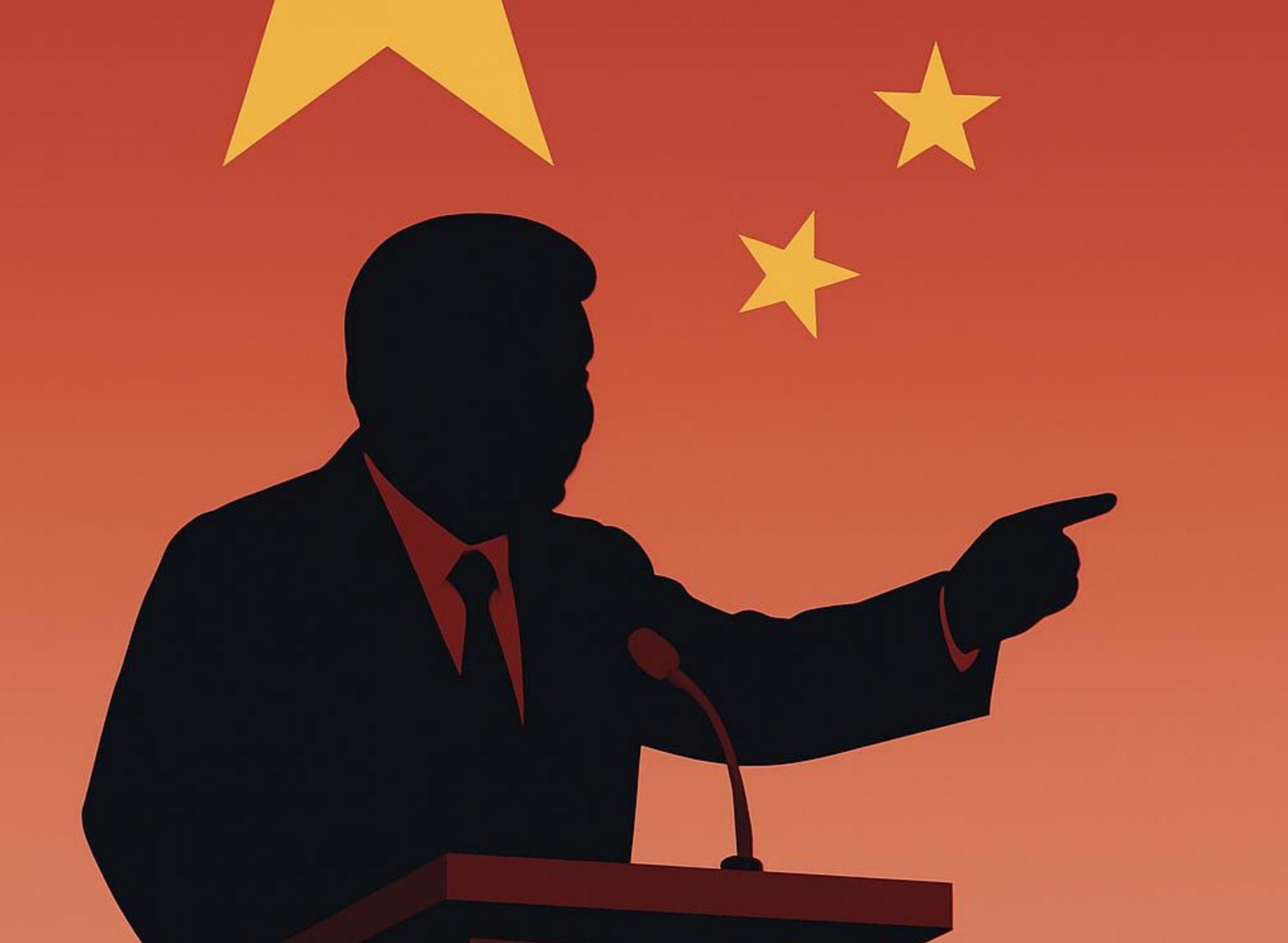
Xi’s China Beneath the Surface
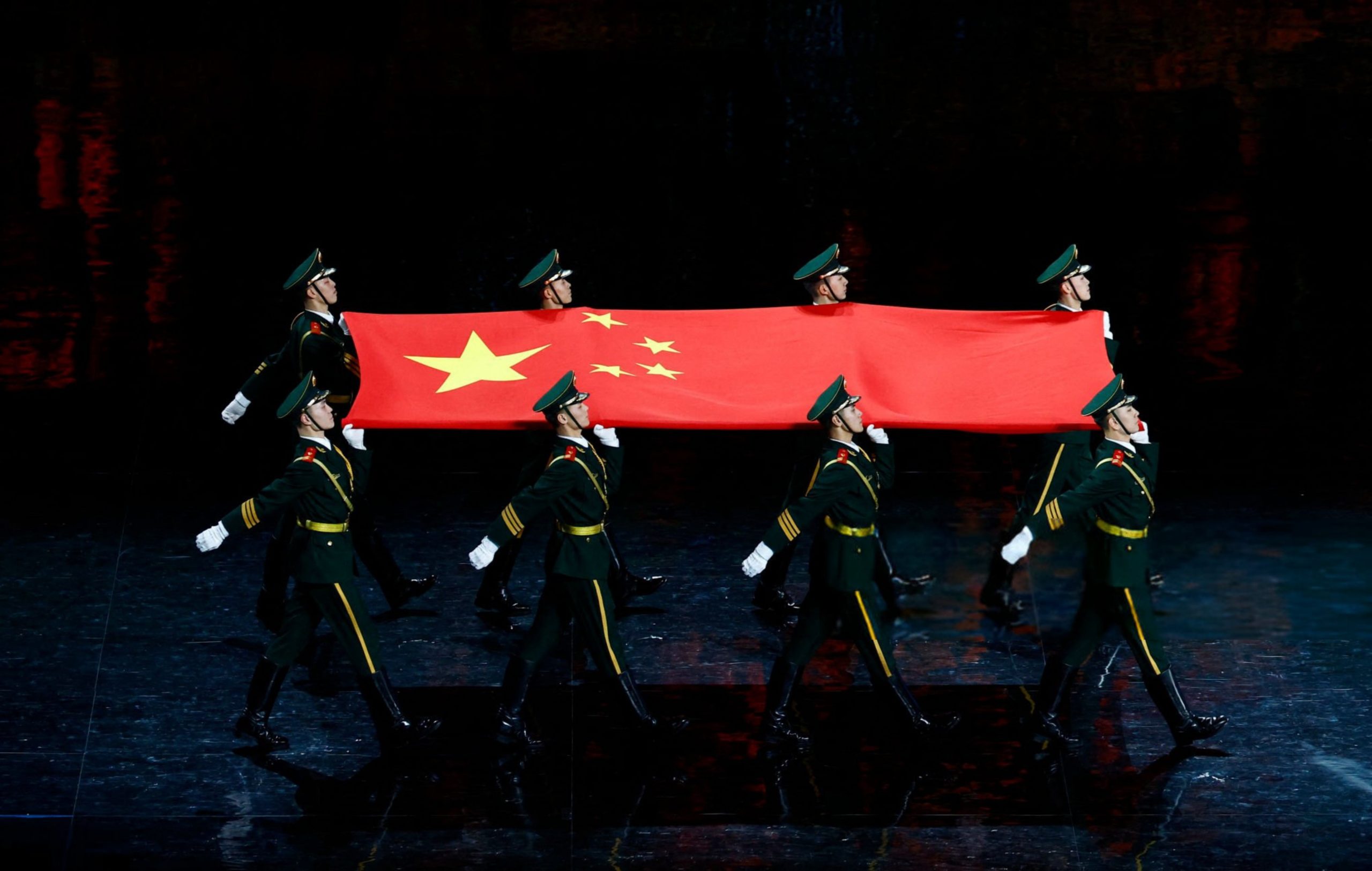
Soft Power, Hard Tactics, and U.S. Resistance
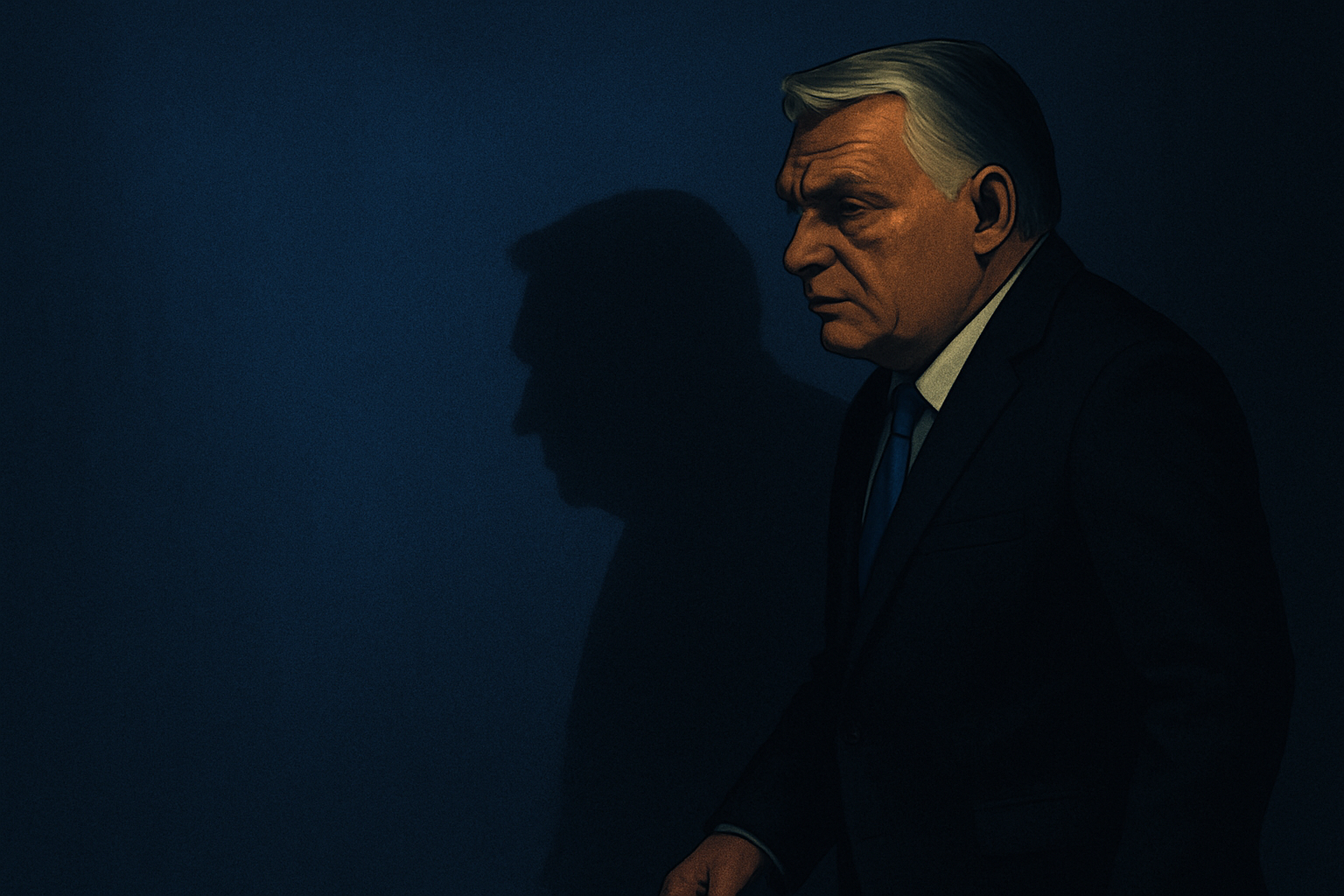
Orban Inside the Union, Against the Union
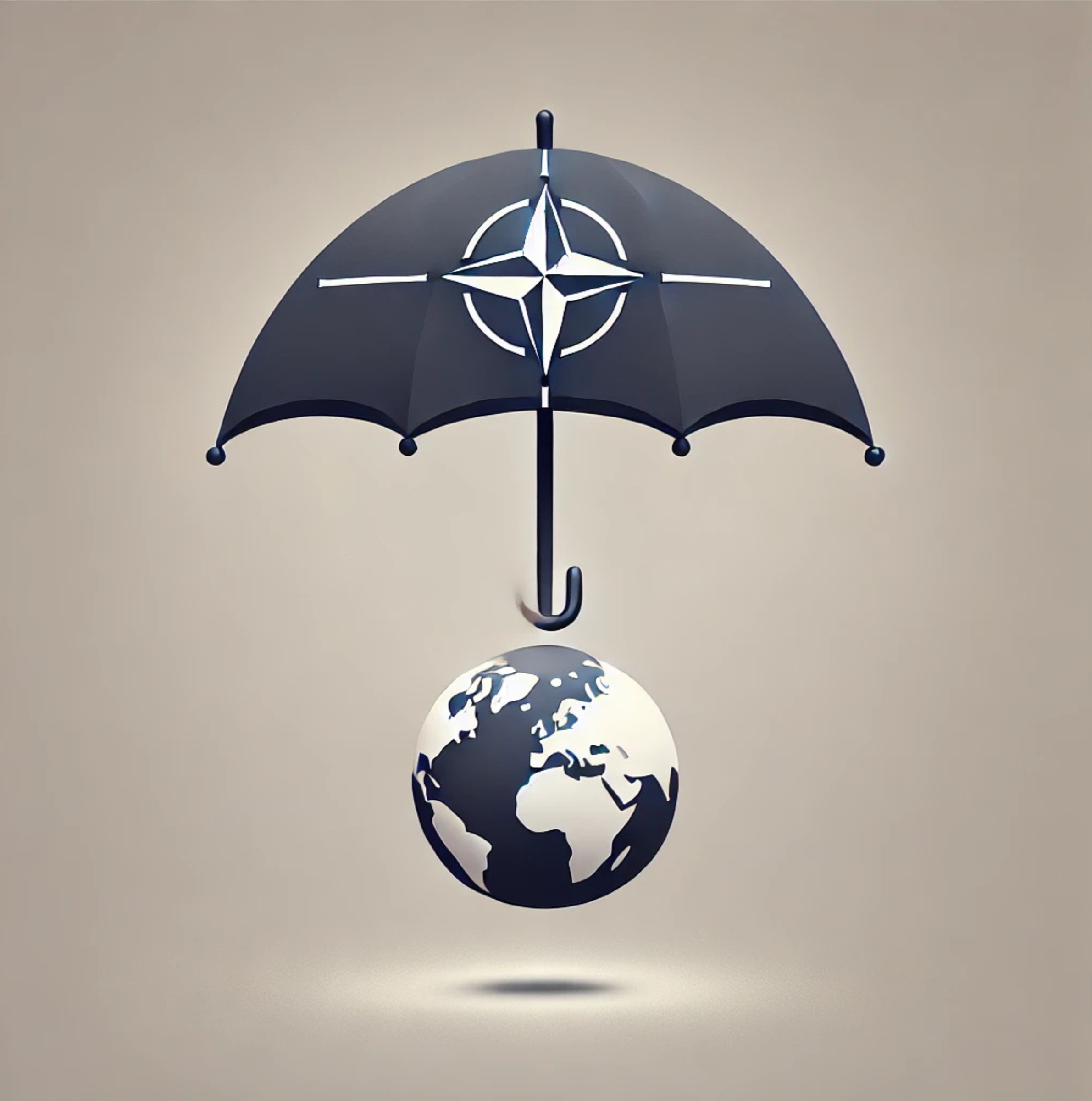
The Alliance’s Search for a New Identity
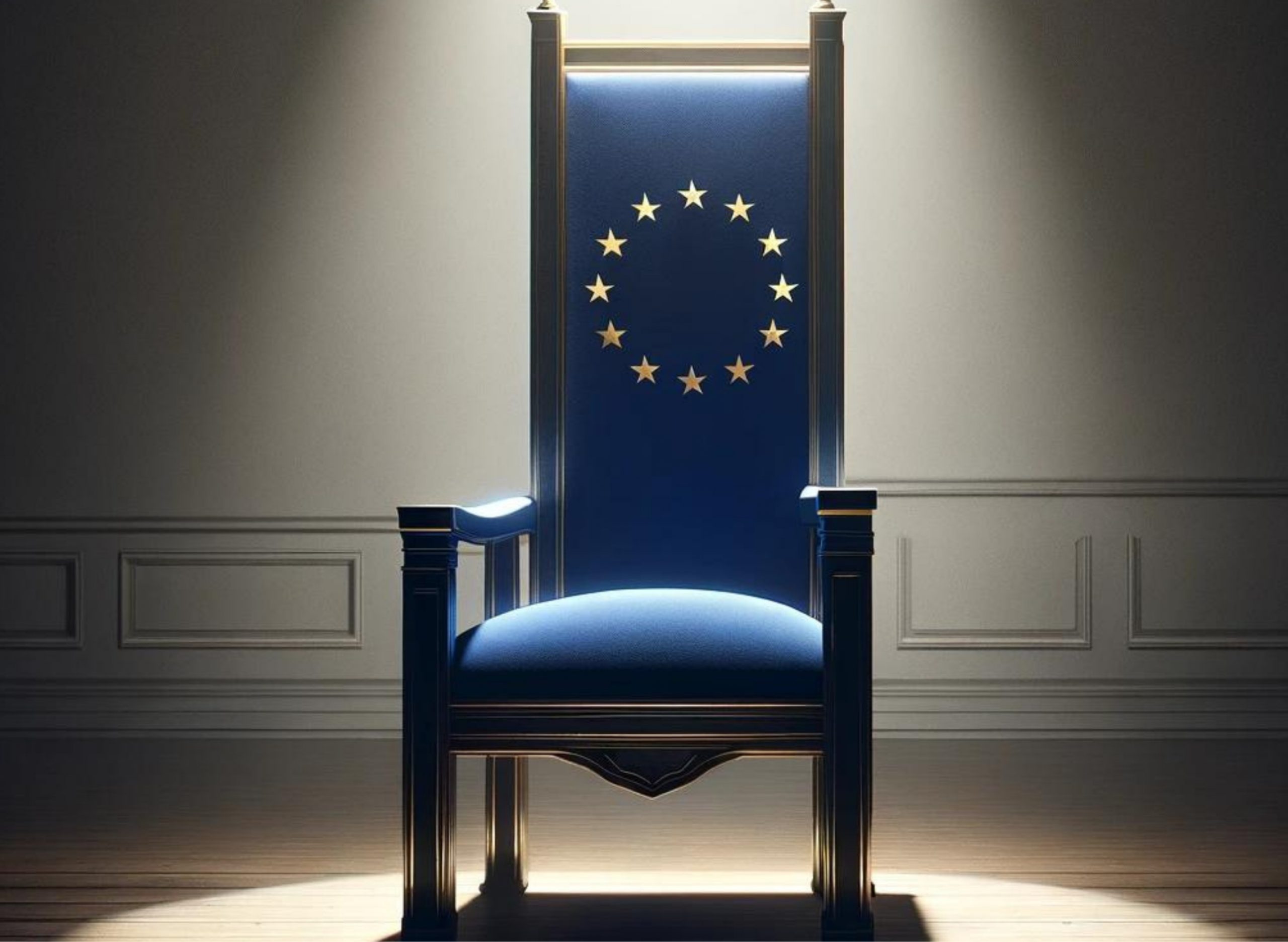
Who Runs Europe?
